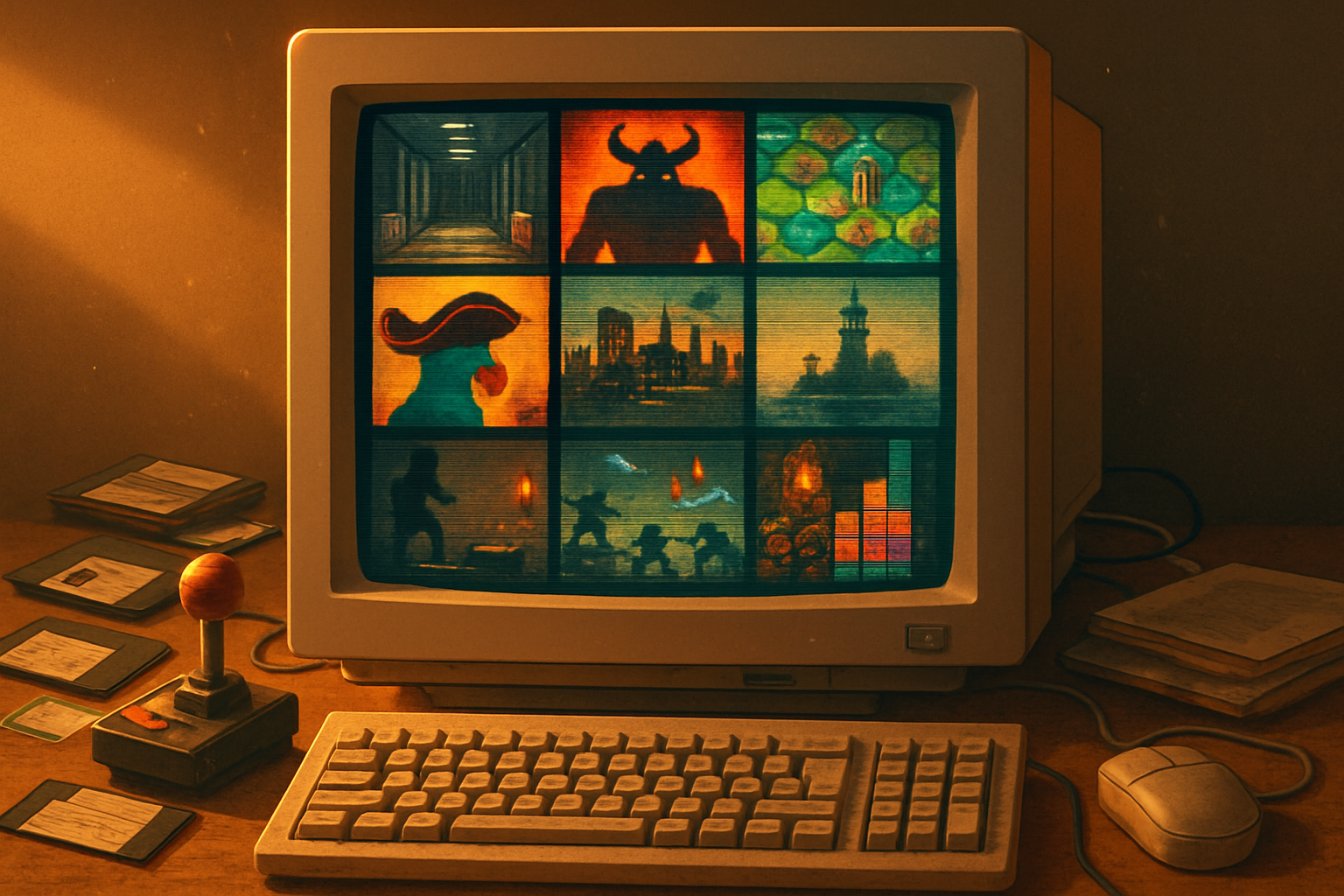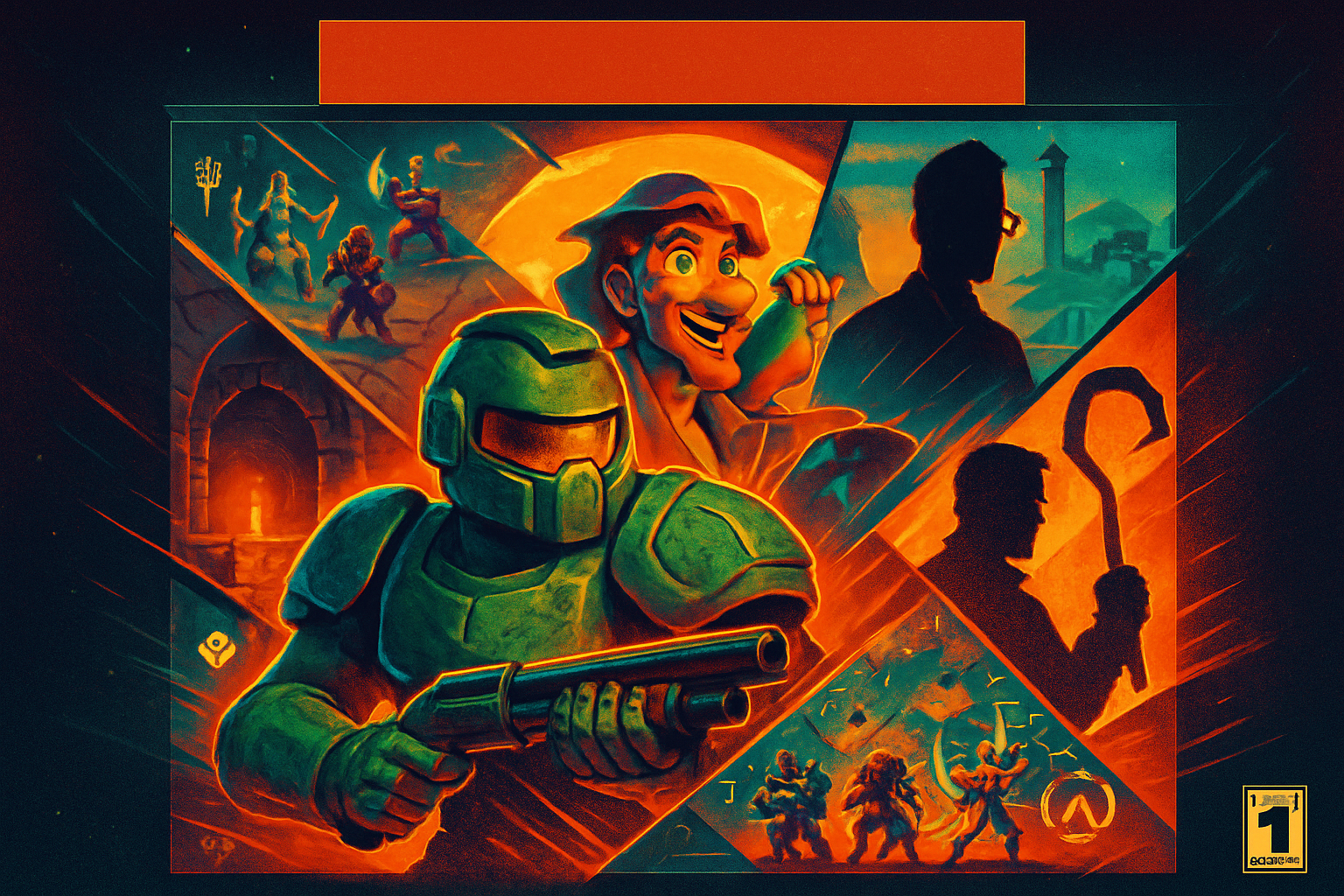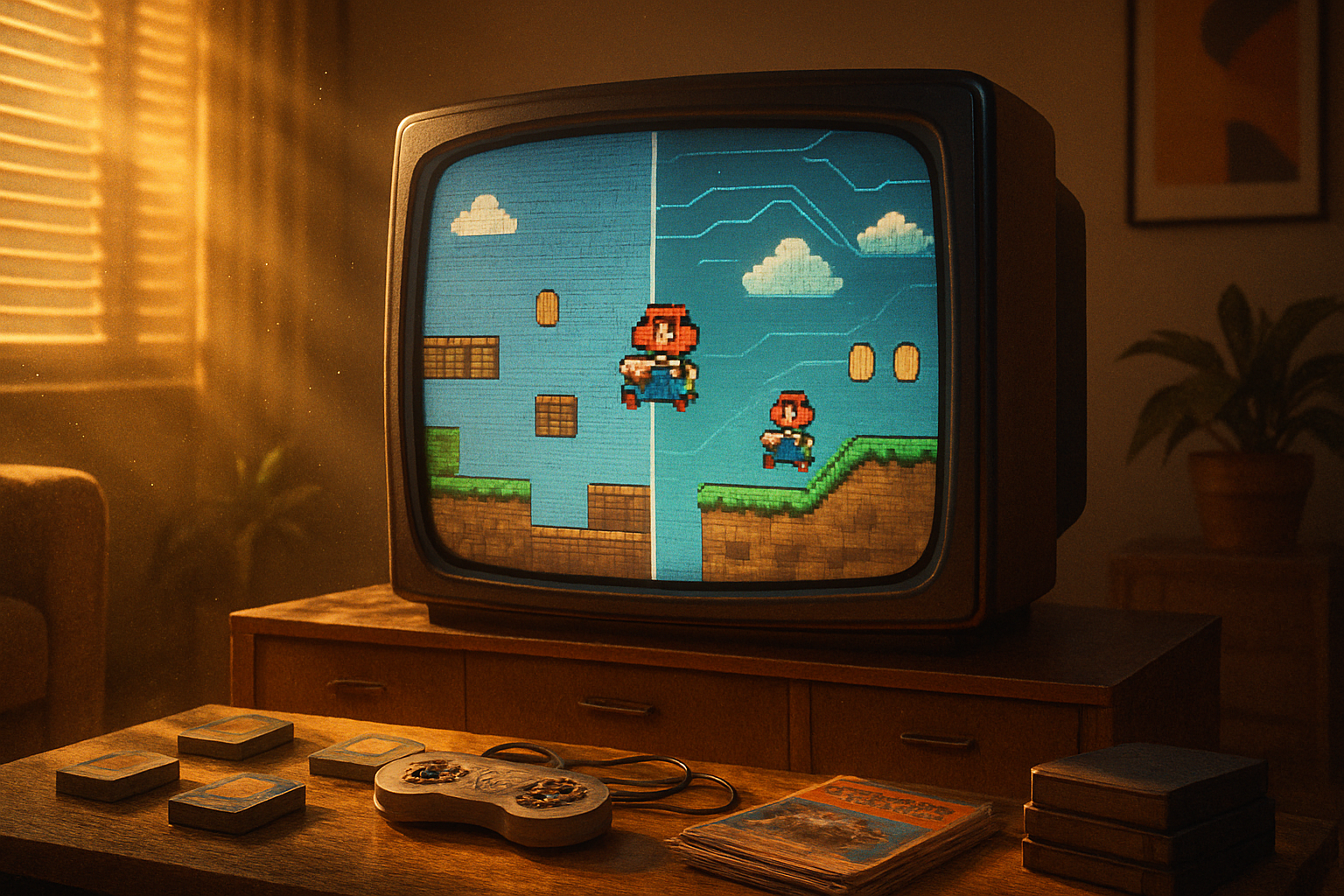· 6 min read
Is Nostalgia Blinding Us? A Critical Look at the Best Retro PC Games
Many classic PC games are celebrated as masterpieces - but how much of that status comes from genuine design quality, and how much from nostalgia? This article breaks down the psychology of nostalgia, examines specific retro PC classics, and offers a framework to judge whether a game truly holds up or is propped up by warm memories.

Introduction
Nostalgia is powerful. A whiff of dust from a floppy disk, the glow of a CRT, or the first few notes of an old game soundtrack can immediately transport players back to a different time. That emotional pull helps explain why certain PC games from the 1980s and 1990s occupy a near-sacred place in gaming culture. But feeling a game is “the best” doesn’t automatically make it so in objective terms.
This post takes a critical look at the cult status of retro PC games. We’ll define what nostalgia does to perception, apply a practical framework for evaluating old games fairly, and test that framework against a handful of beloved classics. Along the way we’ll consider preservation, emulation, and whether modern ports and remasters change the calculus.
Why nostalgia can distort our judgement
Nostalgia isn’t just reminiscing - it’s a psychological experience that often improves mood and increases feelings of social connectedness. But it also alters memory. People tend to recall the emotional high points and forget the annoyances: poor interfaces, long load times, repetitive mechanics, or unfair difficulty spikes.
If you want a readable introduction to the pitfalls of nostalgia beyond personal recollection, see The Atlantic’s piece on nostalgia’s cultural effects: “The Nostalgia Trap” (The Atlantic).
Common nostalgia-driven distortions in games
- Selective memory - We remember the winning moments and forget the tedium (grinding, repetitive fetch quests, unclear objectives).
- Social reinforcement - If your friend group treated a game as a masterpiece, that group consensus cements into personal belief.
- Identity and timing - Games tied to formative years become part of our identity; criticizing them can feel like personal betrayal.
- Technological amnesia - Older hardware and UX constraints are often overlooked when we judge the experience today.
A simple framework for fair retro evaluation
Rather than letting fondness lead, try this short checklist when revisiting classic PC titles:
- Historical impact vs. play experience - separate influence from playability. A game can be historically important without being fun today.
- Core mechanics - are they elegant, deep, and meaningful, or simply novel for their time?
- Interface and accessibility - does the UI actively get in the way? Are controls intuitive to a modern player?
- Pacing and balance - does the game reward skill and mastery, or punish players with opaque mechanics and artificial difficulty?
- Production values - music and art can age well, but bugs, janky animation, and load-folds don’t.
- Preservation and modern ports - does a recent remaster improve the game, or does it just slap a new coat of paint on old problems?
Use these lenses and you’ll be less likely to be swept purely by nostalgia.
Case studies: classics under the microscope
Doom (1993)
- Why it’s venerated - Revolutionized first-person shooters with responsive guns, level design, and modding culture.
- Where nostalgia can gloss over problems - Sparse narrative, repetitive enemy spawns, and level design that depends on dead reckoning rather than clear visual cues can feel primitive to newcomers.
- Verdict - Despite some dated aspects, Doom’s core combat loop and level pacing still hold up. Its historical influence is undeniable. Read more on Doom’s legacy at Wikipedia (
Myst (1993)
- Why it’s venerated - Haunting atmosphere, beautiful pre-rendered environments, and a puzzle-first design that felt like interactive art.
- Where nostalgia can gloss over problems - Puzzles occasionally rely on obtuse external clues, and slow movement combined with long trial-and-error sequences can frustrate modern players who expect clearer feedback.
- Verdict - Myst is an evocative piece of interactive design and still worth experiencing for its mood, but its gameplay is a niche fit today - more museum piece than universally engaging title. See the game page (
The Secret of Monkey Island (1990)
- Why it’s venerated - Sharp writing, memorable characters, and clever puzzles that mixed humor with exploration.
- Where nostalgia can gloss over problems - Some classic adventure design includes dead ends or pixel-hunt puzzles (searching small pixels for hotspots), which are less tolerable now.
- Verdict - The writing and character work largely survive; modern re-releases that add better hinting and UI fixes (or ScummVM support) make it easier for newcomers to enjoy (
Baldur’s Gate (1998)
- Why it’s venerated - Deep party-based CRPG mechanics, memorable companions, and a sprawling story that revived Western RPGs.
- Where nostalgia can gloss over problems - Interface clunkiness, slow pacing, and technical issues on original hardware; modern expectations for streamlining and QoL features have shifted drastically.
- Verdict - Mechanically rich and historically crucial, but the experience benefits immensely from modern patches or the Enhanced Edition ports that add missing conveniences (
Civilization (1991)
- Why it’s venerated - A paradigm-shifting 4X design that made emergent narratives from simple mechanics.
- Where nostalgia can gloss over problems - Early AI limitations, slow late-game tedium, and UI issues that require a lot of micromanagement.
- Verdict - The core concept still inspires designers, but playing the original without quality-of-life improvements can be a slog. Many players prefer later entries or modernized re-releases (
When nostalgia and preservation collide
Part of the joy of retro gaming is preservation. Thanks to sites like GOG (GOG) and the Internet Archive’s MS-DOS library (Internet Archive), many classics are playable on modern systems. Emulation projects such as ScummVM keep adventure games alive by fixing compatibility and patching gameplay annoyances.
But preservation raises tricky questions: when a community or a company changes a classic to “improve” it, are they honoring history or rewriting it? Remasters that fix UI problems and add accessibility can make games relevant again, but they can also obscure what made the original remarkable (for better or worse).
Practical advice for the curious (and skeptical) retro fan
- Watch gameplay first - A 20–30 minute playthrough or review can reveal whether the core loop and pacing match your tastes.
- Look for modern releases or fan patches - These often address many UX and compatibility issues.
- Separate “influence” from “fun” - Recognize the difference between a game that changed the industry and one you’d enjoy playing today.
- Play with someone who remembers the game fondly - but ask them to point out what aged poorly.
- Embrace remasters selectively - A good remaster preserves the feel while making pragmatic improvements; a bad one dresses over frustrations without solving them.
Conclusion
Nostalgia is a double-edged sword. It can guide us toward historically important experiences that shaped the medium, but it can also blind us to design problems that make a game less playable or enjoyable by modern standards. A fair appraisal separates the emotional value of a memory from the technical and design quality of the game itself.
If you love retro games, that’s valid - they shaped who you are. But if you want to share those titles with friends or recommend them to newcomers, use a critical lens. Celebrate the pioneering ideas and preserve the cultural artifacts, while being honest about what plays well today and what survives in golden memory only.
Further reading and resources
- “The Nostalgia Trap” - The Atlantic: https://www.theatlantic.com/magazine/archive/2018/11/the-nostalgia-trap/570827/
- ScummVM (adventure game preservation and compatibility): https://www.scummvm.org/
- Internet Archive - MS-DOS software library: https://archive.org/details/softwarelibrary_msdos
- GOG (commercial source for many retro PC games): https://www.gog.com/
- Doom (1993) - Wikipedia: https://en.wikipedia.org/wiki/Doom_(1993_video_game)
- Myst - Wikipedia: https://en.wikipedia.org/wiki/Myst
- The Secret of Monkey Island - Wikipedia: https://en.wikipedia.org/wiki/The_Secret_of_Monkey_Island
- Baldur’s Gate - Wikipedia: https://en.wikipedia.org/wiki/Baldur%27s_Gate
- Civilization (1991) - Wikipedia: https://en.wikipedia.org/wiki/Civilization_(1991_video_game)



